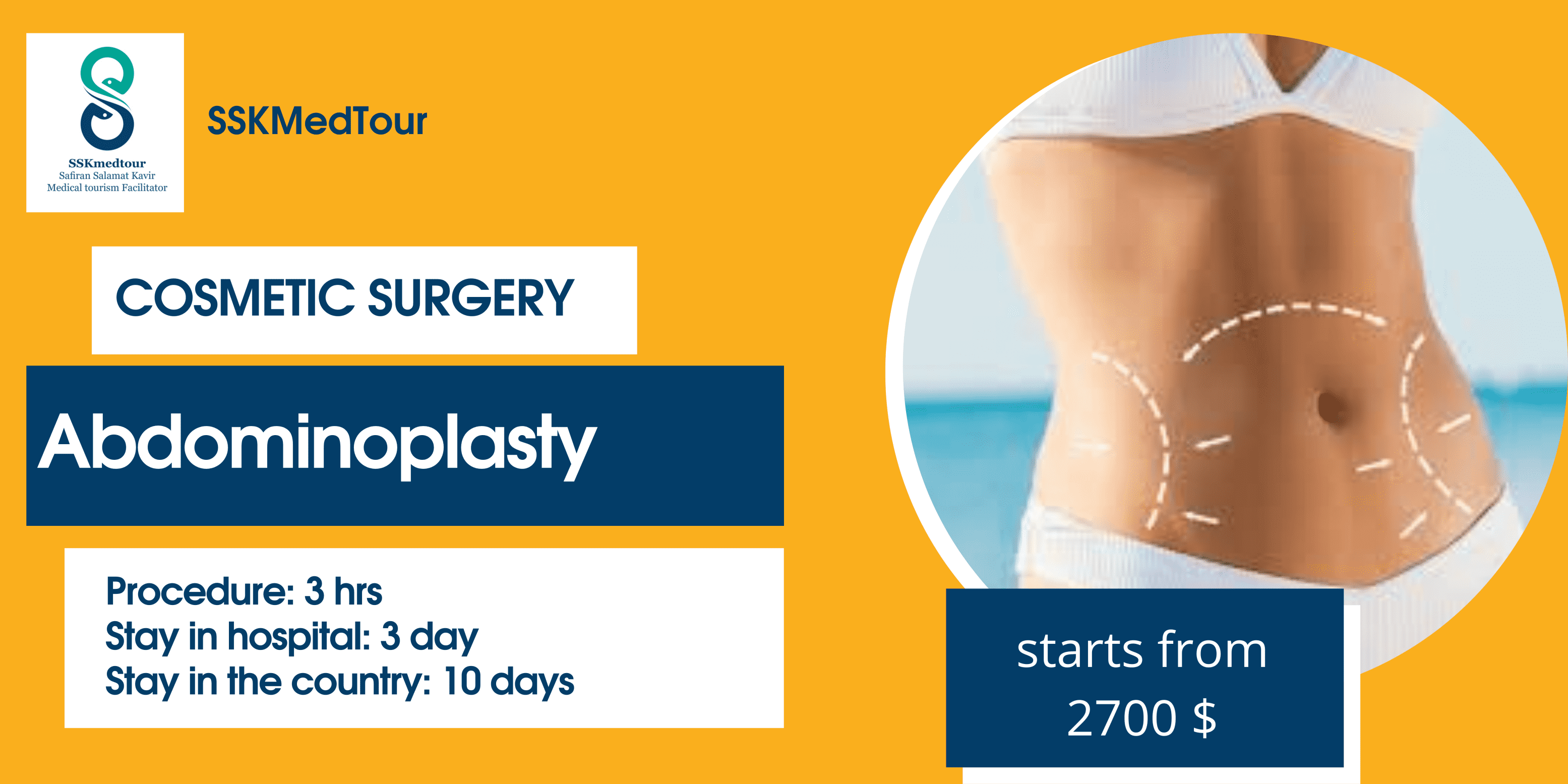

For those who have tried all these and still struggle with the abdominal fat, abdominoplasty or tummy tuck may be a rescuer. It is a cosmetic procedure to help you attain the body that you desire.
Overview
An abdominoplasty, commonly called tummy tuck, is a surgery that involves removing excess fat and skin from the abdominal region and tightening the muscles. This procedure Firm and tighten the abdomen by removing excess skin and fat, tightening the underlying rectus abdominis (6-pack muscles), and hiding the scar under the underwear or bathing suit.
Although the procedure helps to reshape the tummy, it is not an alternative for weight loss. If you do not maintain a healthy lifestyle following the surgery, you may gain the fat back. Tummy tucks are not a method of fat removal. (You might consider liposuction for that). During a tummy tuck, an incision is made, your stomach is opened, and the muscles and tissue are manipulated to form a more aesthetically pleasing look. Then the skin is pulled tight and structured back together. This surgery can easily last 4-5 hours. So, if you are looking for a way to get rid of 10 pounds that you have not tried to lose other ways, this is not for you.
Who is the candidate for abdominoplasty?
Although, anyone who is healthy can opt for the surgery, the doctor takes the final call whether you are eligible. Optimal candidates for tummy tucks are in good health, do not smoke, are within 20% of their ideal body weight, and have excess skin, loose muscle and excess fat which they would like removed. The decision to perform an abdominoplasty is based on certain factors, such as:
• History of multiple pregnancies, resulting in laxity of the abdominal muscles
• Abdominal fat unresponsive to diet and exercises
• Unsuccessful liposuction (a procedure wherein the excess fat is removed using a syringe)
• Body Mass Index (BMI) less than 40
• In addition, you should not have chronic conditions such as diabetes, heart diseases, etc. which can interfere with the surgery.
Preparation before Procedure
Tummy tuck is a major surgery, so, like any other surgery, it requires patient preparation well in advance. Understanding the benefits and risks of the surgery would help you in preparing yourself mentally. During your first visit, your doctor may take some photos of your abdomen (with due permission) to file in your medical record for future comparisons.
The following tips on preparation may help make your tummy tuck uneventful:
• Quit smoking to promote healing and reduce the risk for complications.
• Have a healthy and well-balanced diet.
• Inform your doctor about all the medications you are taking. These include prescription and herbal drugs.
• Follow the doctor’s advice on the medications that need to be discontinued before the surgery.
• Inform your doctor if you have history of any allergies with any medications.
• Arrange for icepacks, petroleum jelly, and comfortable loose clothing.
• On the night before the surgery, you are not allowed to eat or drink anything. The surgery requires you to fast overnight. Arrange for someone to accompany you on the day of surgery.
Procedure type
The surgery is classified into three types, based on the extent of fat removal:
• Complete abdominoplasty involves giving an incision on the abdomen from one side of the hip bone to the other side. The excess fat is removed, and the muscles and skin are reshaped and sutured in place; the belly button may need to be moved to the right place.
• Partial abdominoplasty is appropriate for patients who have fat deposits in the area below the navel. It is a relatively short procedure and can be completed in an hour or two.
• Extended or high lateral tension abdominoplasty is a combination of complete abdominoplasty and a lateral thigh lift.
About Procedure
The tummy tuck is performed under general anesthesia. Once the anesthesia sets in, an incision is made on the abdomen from the hip bone on one side to the other side, and the excess fat and skin between the naval region and pubic hair is removed. The connective tissue overlying the abdominal muscles is tightened with sutures. The navel is then repositioned on the correct place on the ‘new’ abdomen. The incision between the hip bones is stitched togetherand covered with a surgical dressing. The surgery usually lasts between 1 to 5 hours.
Post-Procedure Care
Based on your recovery, you may have to stay the night at the hospital. You may have a drainage tube placed beneath the skin to help remove the fluid accumulated beneath your skin around the incision site. The operated area is closed with a firm, elastic bandage to promote healing.
As with other surgeries, there is a minor risk of infections, bleeding, and clot formation. You may be prescribed medication to relieve pain and swelling. You may have soreness for a few weeks post-surgery.
The surgical incision heals with a scar, which usually fades away gradually. You may experience a diminished sensation in the abdominal area for a few months.
Recovery Tips
Following the instructions given by your doctors may help you to heal faster.
• You may be at risk of clot formation due to the surgery; starting to walk on the same day may lower the risk.
• You may find that bending forwards while walking prevents tension on the abdominal sutures; you should maintain this kind of posture for nearly a week, to give the sutures enough time to heal. Sleeping with your hips flexed also helps to relieve tensions in the future.
• Smoking is prohibited for a few weeks following the surgery, as it can reduce the blood flow to the operated area and lead to skin damage and poor healing.
• You should not engage in strenuous activities for at least 6 weeks after the surgery.
The surgery results may be long-lasting if coupled with a healthy diet and exercise.
For fast recovery, you can also do the following
• take vitamin A and vitamin C supplements.
• Drink green tea to boost immunity and antioxidant levels.
• Take a probiotic supplement.
• Eat pineapple and papaya to reduce bloating and inflammation.
• Use arnica to reduce swelling, bruising, and pain.
• Take a staphysagria supplement to heal your incision.
• Take a phosphorus supplement or drink ginger tea to relieve nausea.
FAQ
What should I expect after tummy tuck surgery?
After surgery, you will be placed in a compression garment, which will be worn for 4-6 weeks after surgery to help with reducing swelling. You may feel some pain or discomfort, but most patients are able to manage post-procedure pain or discomfort with just a few days of pain medications.
You will be bent at the waist while standing or lying down for 7-10 days after surgery to protect the incision and to allow for your skin to adapt. After this time, you will be able to stand up straight. If a drain is placed, then it will be removed as soon as the output is low enough (usually in 1-2 weeks).
How do I know if I need a tummy tuck or just liposuction?
If you have had children and your abdominal skin is stretched, or you have lost a lot of weight, you probably need a tummy tuck to remove the excess skin and tighten the abdominal muscles. At the same time, love handles can be suctioned to improve your total abdominal appearance. If you have an excess roll of skin and abdominal fat, sometimes liposuction and just removal of the roll (the pannus) will give you a much-improved look without a full tummy tuck.
What is corrected by an abdominoplasty?
This surgery is designed to get rid of all of the excess skin between your pubis and belly button. It also tightens your abdominal muscles, which are usually stretched out after pregnancies.
When do I see the final result?
Within the first few weeks, almost all of the swelling is usually gone. It may take up to a year or two for the scar to mature.



No comment